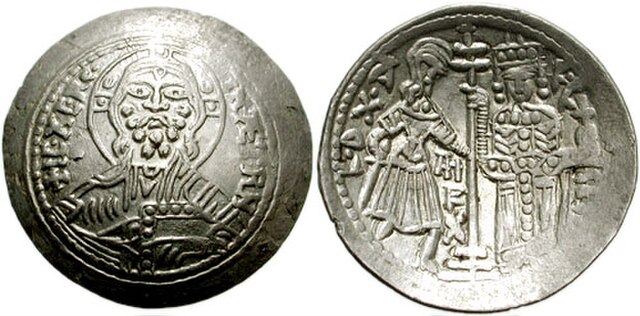Tiraz are medieval Islamic embroideries, usually in the form of armbands sewn onto robes of honour (khilat). They were bestowed upon high-ranking officials who showed loyalty to the Caliphate, and given as gifts to distinguished individuals. They were usually inscribed with the ruler's names, and were embroidered with threads of precious metal and decorated with complex patterns. Tiraz were a symbol of power; their production and export were strictly regulated, and were overseen by a government-appointed official.
A sovereign wearing an armband with Arabic inscription, the tiraz
Enthroned person wearing a qaba dress with tiraz armbands, Kashan, late 12th-early 13th century CE.
Copy of the mantle of Roger II, Fatimid art textile
This tiraz attributed to the 7th-century Umayyad caliph Marwan I is among the earliest tiraz. It uses very small Kufic script and very dominant pattern typical of early tiraz.
Roger II or Roger the Great was King of Sicily and Africa, son of Roger I of Sicily and successor to his brother Simon. He began his rule as Count of Sicily in 1105, became Duke of Apulia and Calabria in 1127, then King of Sicily in 1130 and King of Africa in 1148.
Detail of a mosaic showing Roger II (Rogerios Rex in Greek letters) receiving the crown from Jesus Christ (IC), Martorana, Palermo.
Royal mantle of Roger II, bearing an inscription in Arabic with the Hijrah date of 528 (1133–34). Imperial Treasury, Vienna, in the Hofburg Palace.
Roger II riding to war, from the Liber ad honorem Augusti of Petrus de Ebulo, 1196.
AR Scyphate Ducalis, dated year 10 (1140), after the king's victory on 25 July. Obverse: Christ. Reverse: King Roger and Duke Roger.








